The banjo is a stringed instrument with a thin membrane stretched over a frame or cavity to form a resonator. The membrane is typically circular, in modern forms usually made of plastic, originally of animal skin. Early forms of the instrument were fashioned by African Americans and had African antecedents. In the 19th century, interest in the instrument was spread across the United States and United Kingdom by traveling shows of the 19th century minstrel show fad, followed by mass-production and mail-order sales, including instruction method books. The inexpensive or home-made banjo remained part of rural folk culture, but 5-string and 4-string banjos also became popular for home parlour music entertainment, college music clubs, and early 20th century jazz bands. By the early 21st century, the banjo was most frequently associated with folk, bluegrass and country music, but was also used in some rock, pop and even hip-hop music. Among rock bands, the Eagles, Led Zeppelin, and the Grateful Dead have used the five-string banjo in some of their songs.

Xalam is a traditional lute from West Africa with 1-5 strings.

Ektara is a one-stringed musical instrument used in the traditional music of South Asia, and used in modern-day music of Bangladesh, India, and Pakistan.
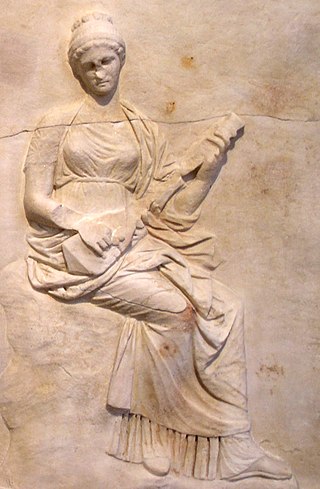
The pandura or pandore, an ancient string instrument, belonged in the broad class of the lute and guitar instruments. Akkadians played similar instruments from the 3rd millennium BC. Ancient Greek artwork depicts such lutes from the 3rd or 4th century BC onward.

The sintir, also known as the guembri (الكمبري), gimbri, hejhouj in Hausa language, is a three stringed skin-covered bass plucked lute used by the Gnawa people. It is approximately the size of a guitar, with a body carved from a log and covered on the playing side with camel skin. The camel skin has the same acoustic function as the membrane on a banjo. The neck is a simple stick with one short and two long goat strings that produce a percussive sound similar to a pizzicato cello or double bass.

Dan Maraya Jospronunciation was a Nigerian Hausa griot known for playing the kontigi. He was also remembered as a man who did not limit his praise singing to the rich and famous, but sang praises for common people as well.

A kontigi or kuntigi is a one-stringed African lute played by the Hausa, Songhai and Djerma. A 3-string version teharden is used among the Tamashek.

The akonting is the folk lute of the Jola people, found in Senegal, Gambia, and Guinea-Bissau in West Africa. It is a banjo-like instrument with a skin-headed gourd body, two long melody strings, and one short drone string, akin to the short fifth "thumb string" on the five-string banjo.
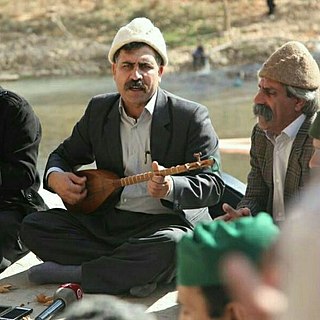
The term Tanbur can refer to various long-necked string instruments originating in Mesopotamia, Southern or Central Asia. According to the New Grove Dictionary of Music and Musicians, "terminology presents a complicated situation. Nowadays the term tanbur is applied to a variety of distinct and related long-necked lutes used in art and folk traditions. Similar or identical instruments are also known by other terms." These instruments are used in the traditional music of Iran, India, Kurdistan, Armenia, Afghanistan, Azerbaijan, Pakistan, Turkey, Tajikistan, Kazakhstan, and Uzbekistan.

Angular harp is a category of musical instruments in the Hornbostel-Sachs system of musical instrument classification. It describes a harp in which "the neck makes a sharp angle with the resonator," the two arms forming an "open" harp. The harp stands in contrast to the arched harp or bow harp in which the angle is much less sharp and in which the neck curves away from the resonator. It also stands in contrast to the frame harp which is a "closed harp" and in which there is no opening between the resonator and the upper tip of the harp, but has a third side forming a triangle.
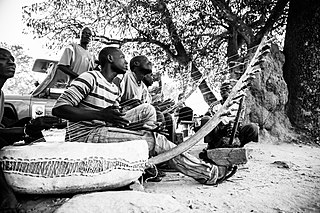
African Harps, particularly arched or "bow" harps, are found in several Sub-Saharan African music traditions, particularly in the north-east. Used from early times in Africa, they resemble the form of harps in ancient Egypt with a vaulted body of wood, parchment faced, and a neck, perpendicular to the resonant face, on which the strings are wound.
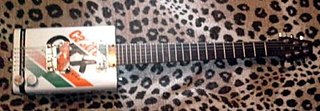
The Ramkie is a type of guitar usually made in South Africa, Botswana, Zambia, Namibia and Malawi. It is made using a discarded oil can for the soundbox. It has three or four strings, made of fishing wire or bicycle brake wire, and may be fretted or fretless. The instrument has apparently always been used for repetitive chord-playing, not melodic patterns.

The veena, also spelled vina, comprises various chordophone instruments from the Indian subcontinent. Ancient musical instruments evolved into many variations, such as lutes, zithers and arched harps. The many regional designs have different names such as the Rudra veena, the Saraswati veena, the Vichitra veena and others.
The segankuru is a bowed trough zither, bar zither or musical bow, a string instrument found in Botswana and other areas of South Africa, and found under many names. It consists of a wooden body attached to a tin can resonator, with a single metal string played with a bow. The instruments main role is for self or group entertainment for young men, while herding cattle, etc.

Lutes are stringed musical instruments that include a body and "a neck which serves both as a handle and as a means of stretching the strings beyond the body".

The simbing is an malian harp-lute, used by the Mandinka people of Mali, and Mandinka and Jola peoples of Senegal and Gambia. The instruments consist of a calabash resonator, a stick for a neck, a metal jingle attached to the neck, and a bridge that holds the string over the skin soundboard in a vertical line. For comparison lutes usually have the strings held in a horizontal line above the soundboard. The instruments have five to nine strings. The instrument from the 1790s was reported as having seven strings by Mungo Park.

The garaya or komo is an oval-bodied, two-string spike lute from Niger and Northern Nigeria.

The gurmi is a two or three-stringed lute of the Hausa people of northern Nigeria. May also be called gurumi or kumbo. In looking at the two-finger playing style used by musicians who play the gumbri, researchers have listed it as a possible relative to the banjo. Researchers have talked about the gurmi and gurumi as if these are two different but similar instruments.
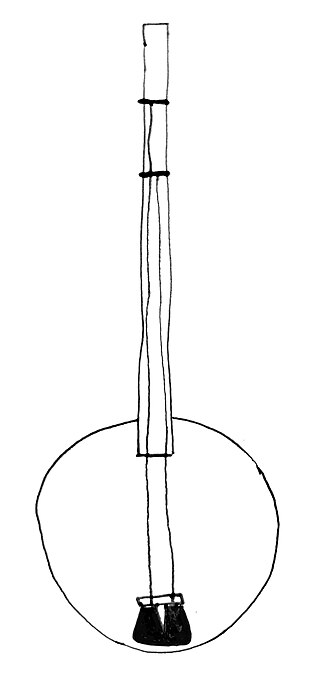
The keleli is a lute of the Teda people of Tibesti, Republic of Chad.


















